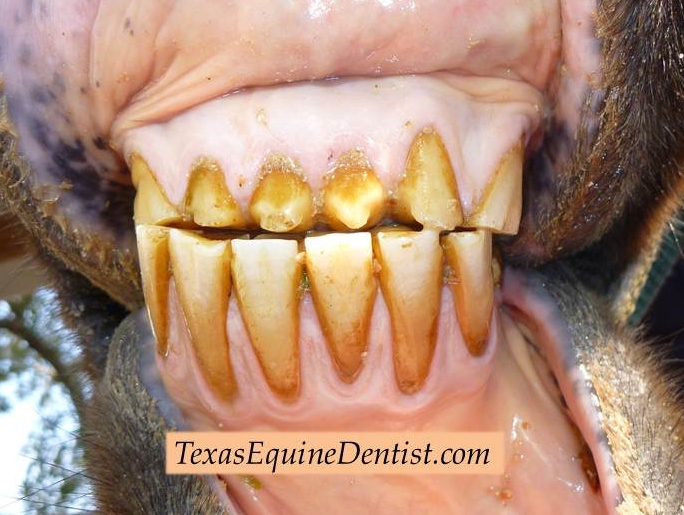Equine Dentistry: Cribbing
This ol’ guy has pretty much destroyed his upper incisors by years of cribbing. For those not familiar with cribbing, it is a behavior where a horse uses his upper incisors to grip surfaces such as stall doors, fence posts, pipe rails, etc. and then arches his neck and sucks in air. This causes an endorphin release that gives the horse a “high” and becomes very habit forming.
Cribbing often starts due to boredom or anxiety in horses that are confined for long periods of time. Dietary imbalances can also lead to cribbing. Research has shown that foals weaned in a stable (vs. pasture) and fed high carbohydrate feed are up to 4 times more likely to become cribbers.
Cribbing leads to abnormal wear to the teeth and in some cases causes colic and stomach ulcers. It is a difficult and frustrating habit to break. Cribbing collars work on some horses and are most effective when used early on when the habit first starts. There are surgical procedures that help some horses. And there are drugs that prevent the endorphin release but their effectiveness is short lived.
From a dental perspective, our goal is to remove any overgrowth and uneven surfaces of the incisors to allow proper balance and occlusion of the cheek teeth.
David Warren, D.V.M.

